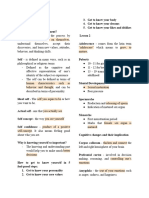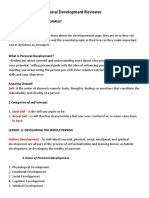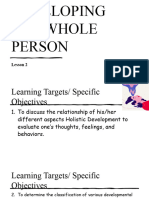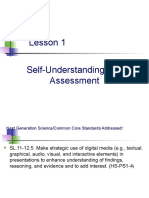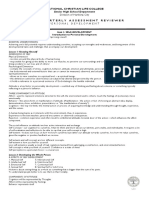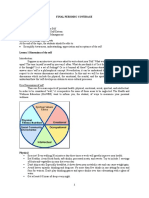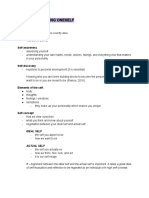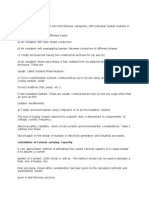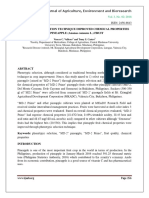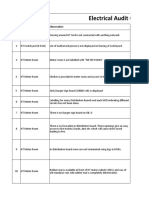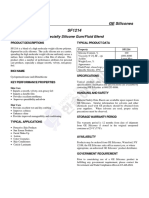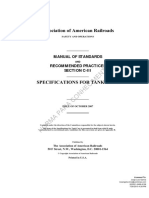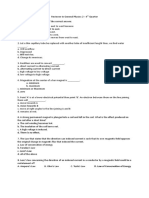Lesson 1: Knowing Oneself
This lesson introduces the concept of personal development by focusing on self-awareness, self-concept, and related
ideas.
What is Personal Development?
Personal development is the process of improving yourself by gaining self-awareness, building skills, and developing
positive habits to work toward your life goals. It involves growth in all areas of life: emotional, social, mental, physical,
and spiritual.
The main benefits of knowing yourself include:
• Better decision-making
• Stronger emotional awareness
• Healthier relationships
• Clearer goals and purpose
• Higher self-confidence
• Personal growth and improvement
Core Concepts of the Self
• Self-Concept: Your general idea about yourself, including your personality, values, and perception of your own
behavior. It is learned through socialization, is organized based on your beliefs, and is dynamic, meaning it can
change over time.
o Example: Student A defines themselves only as an “honor student,” so getting a low grade makes them
feel like a total failure. Student B sees themselves as an honor student, a loyal friend, a volleyball player,
and a big sister. If they fail a test, they feel upset but it doesn’t define their entire worth.
• Self-Esteem: This is the value you put on yourself—how much you like, accept, and respect yourself overall.
o Example: Arvin didn’t make the varsity basketball team and felt disappointed. But he reminded himself
that he has other strengths, like doing well in school, and can try again next year. He doesn't let one
failure define his worth.
• Self-Worth: This is your belief that you are valuable and deserve love and respect, independent of your
achievements or others' opinions.
o Example: Maria didn't win an art contest, and some classmates teased her. Instead of feeling worthless,
she reminded herself that her value isn’t based on awards and continued painting because it brings her
joy.
• Self-Efficacy: This is your belief and confidence that you can accomplish specific tasks and control your
environment.
� o Example: Liza is nervous about a presentation but remembers that she prepared well and practiced. She
tells herself, “I can do this,” and her belief in her ability helps her succeed.
Self-Awareness
Self-awareness is the ability to know yourself extensively, including your inner state and how you think. There are two
types:
1. Internal Self-Awareness: Clearly seeing your inner self—your values, desires, and reactions.
2. External Self-Awareness: Understanding how other people see you.
According to a study by Dr. Tasha Eurich for the Harvard Business Review, these two types create four self-awareness
profiles:
Internal Self- External Self-
Type Description Example
Awareness Awareness
Jessa is in touch with her
They know themselves well
emotions but is surprised when
Introspectors High Low but are unaware of how
classmates call her "moody" or
others perceive them.
"distant."
They lack knowledge of Louie tries many different
Seekers Low Low themselves and how others hobbies to "find himself" but is
see them. unsure of who he really is.
They understand Carlos knows he's good at public
themselves and seek to speaking and that people
Aware High High
understand how others respect his leadership, and he
perceive them. uses this to encourage others.
They value others' Kevin always agrees with his
perceptions so much that friends, even if he disagrees
Pleasers Low High
they disregard their own deep down, just to maintain
feelings and beliefs. peace.
Lesson 2: Holistic Development
This lesson explains how a person is made up of different, interconnected parts that must be developed together.
�What is Holistic Development?
Holistic development is the comprehensive growth of an individual across all dimensions of life, integrating different
aspects to achieve overall well-being and fulfillment.
The Five Aspects of Holistic Development
1. Physiological: The growth and changes in the body. It includes physical attributes (build, height, hair) and organ
systems. You can care for it by eating healthy, being active, and getting enough sleep.
2. Cognitive: How a person thinks, learns, reasons, and solves problems. You can improve it by reading, solving
puzzles, and staying curious.
3. Social: How you build relationships, communicate, and work well with others. You can develop it through
community activities (bayanihan), group work, and family gatherings.
4. Spiritual: Understanding your values, beliefs, and sense of purpose. You can improve it by spending quiet time,
meditating, and practicing kindness.
5. Psychological: How you manage your emotions, thoughts, and behaviors, including your self-esteem and coping
skills. You can improve it by expressing your feelings, setting healthy goals, and asking for help.
The Cycle: Thoughts, Feelings, and Behavior
These three elements are linked and influence one another continuously.
• Thoughts: The ideas and beliefs in your mind.
Example: "I think I can do well in this subject".
• Feelings: Your emotional responses to thoughts and experiences.
Example: Feeling motivated or anxious.
• Behavior: The actions you take based on your thoughts and feelings.
Example: Raising your hand to answer a question or avoiding eye contact.
Attitude
An attitude is how you think and feel about something, which is shown through your behavior. It is made of three
elements:
1. Cognitive: Your beliefs and knowledge.
2. Affective: Your emotional responses.
3. Behavioral: How the attitude influences your actions.
• Example: A student who values honesty (Attitude) and feels stressed about an exam (Feeling) might believe
cheating is the only way to pass (Belief) and decide to cheat (Behavior), despite their attitude against it.
�Lesson 3: Developmental Stages in Adolescence
This lesson defines adolescence and the significant changes that occur during this life stage.
What is Adolescence?
The term adolescence comes from the Latin word adolescere, meaning "to grow to maturity". It is a critical transition
from childhood to adulthood marked by rapid and sudden physical, cognitive, and socioemotional development.
Key Changes During Adolescence
• Physical and Emotional Changes: Adolescents experience hormonal shifts, puberty, and new, complex
emotions.
• Identity Formation: According to psychologist Erik Erikson's theory of Psychosocial Development, the main
challenge of this stage is Identity vs. Role Confusion. Teenagers test different roles to form a single, coherent
sense of self. This period also involves developing sexual awareness and a personal gender identity.
Lesson 4: Mental Health, Stress, and Coping
This lesson explores what stress is, its different forms, how it affects adolescents, and strategies to cope with it.
Understanding Stress
- The concept of stress was first defined in 1936 by Dr. Hans Selye, who is known as the "Father of Stress Research".
- Stress is the body's non-specific response to any demand, while a stressor is the trigger for that response.
Types of Stress
Based on Impact:
• Eustress (Positive): Motivates you and improves performance.
o Example: Practicing for a sports competition.
• Distress (Negative): Overwhelms you and harms your health.
o Example: Constant family conflict causing anxiety.
Based on Time:
• Acute Stress: Short-term stress from everyday situations.
o Example: An unannounced recitation or a pop quiz.
• Episodic Acute Stress: Experiencing acute stress frequently.
o Example: Always cramming for deadlines or frequently being late for class.
• Chronic Stress: Long-term, damaging stress that can destroy your health.
� o Example: Living with ongoing family conflict, continuous bullying, or long-term financial problems.
The Teenage Brain and Stress
When faced with a stressor, the brain's hypothalamus releases hormones like adrenaline and cortisol, triggering the
"fight-or-flight" response. In adolescents, this response is much quicker because the prefrontal cortex (the brain's
"thinking center" for logic and impulse control) is still developing. This means emotions often take over before logical
thinking can kick in.
• Example: When called to speak in class, a teen's brain might immediately react with panic (heart races, mind
goes blank) before they have a chance to think things through logically.
Sources and Signs of Stress
Common sources for teens include:
• Social Pressures: The need to fit in or being bullied.
• Family Relationships: High expectations or arguments with parents.
• Academic Pressure: The need to get good grades or prepare for exams.
• Self-Doubt: Feeling insecure about appearance or abilities.
Signs of stress can be:
• Physical: Constant fatigue, headaches, upset stomach, weight changes.
• Cognitive: Lack of focus, forgetfulness, negative thoughts.
• Emotional/Behavioral: Changes in sleeping habits, withdrawing from people, increased anger or irritability.
Healthy Coping Strategies
You can manage stress by:
• Talking It Out: Share your feelings with a friend, family member, or counselor.
• Moving: Exercise can help release tension.
• Resting: Get enough sleep to let your body and mind recover.
• Using Creative Outlets: Draw, write, or play music to express your feelings.
• Being Positive: Practice gratitude by thinking about things you are thankful for.
Key Persons and Theorists
These are the important individuals whose ideas and research are mentioned in the lessons.
Hans Selye
� • Known as the "Father of Stress Research".
• In 1936, he was the first to define stress as the non-specific response of the body to any demand.
Erik Erikson
• A key psychologist whose Psychosocial Development Stages are mentioned.
• He identified the primary challenge for adolescents as Identity vs. Role Confusion, where they work to form a
sense of self.
Dr. Tasha Eurich
• She conducted a study for the Harvard Business Review on self-awareness.
• Her study identified the four types of individuals based on their levels of internal and external self-awareness:
Introspectors, Seekers, Aware, and Pleasers.












